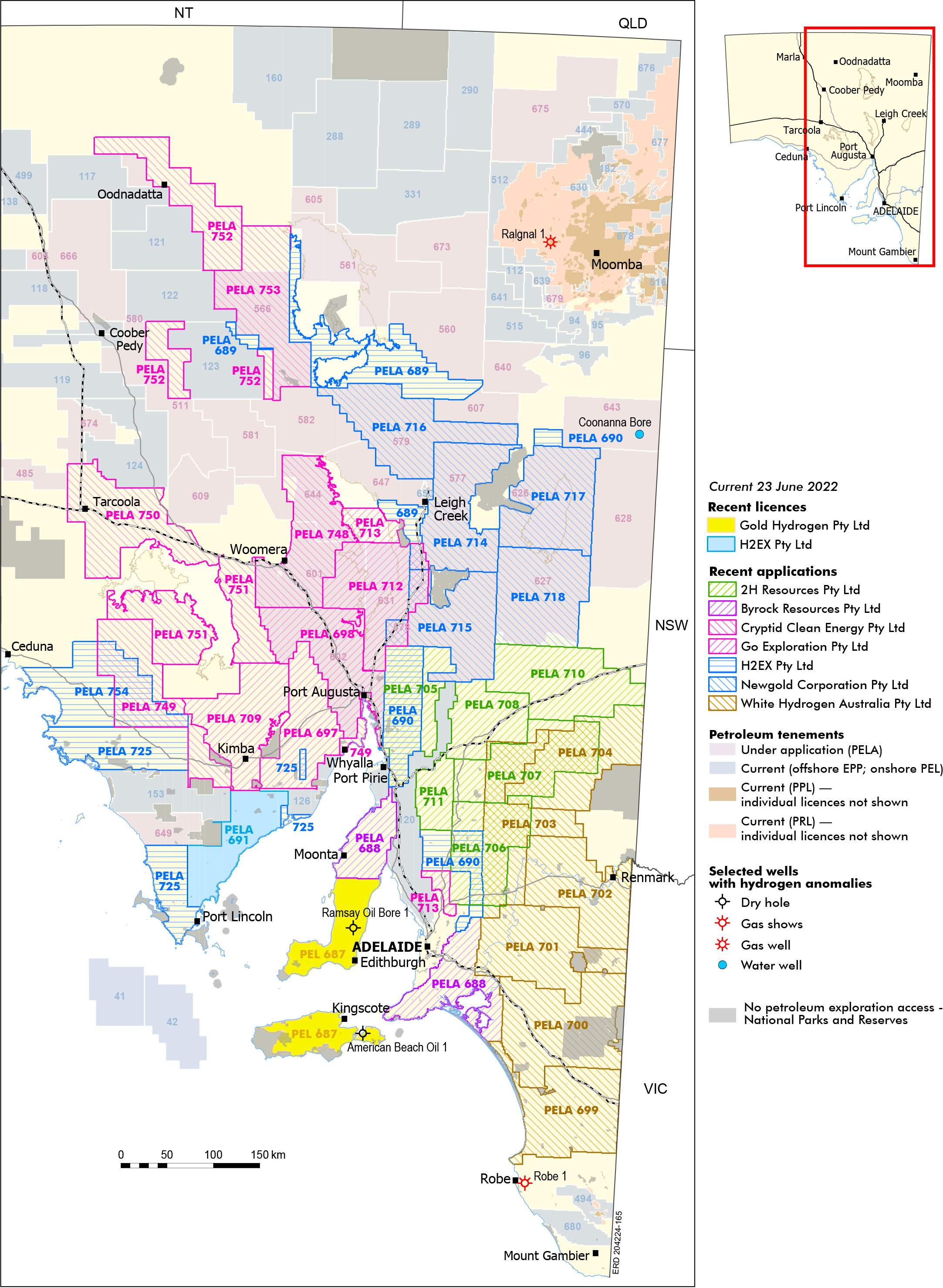On this page
Project summary
On 11 February 2021 the Petroleum and Geothermal Energy Regulations 2013 (now Energy Resources Regulations 2013) were amended to declare hydrogen, hydrogen compounds and by-products from hydrogen production regulated substances under the Petroleum and Geothermal Energy Act 2000 (now Energy Resources Act 2000 (ER Act)). Companies are now able to apply to explore for natural hydrogen via a Petroleum Exploration Licence (PELs) and the transmission of hydrogen or compounds of hydrogen are now permissible under the transmission pipeline licencing provisions of the ER Act.
Figure 1. Petroleum exploration licences and applications lodged by companies with interest in hydrogen
Potential exists for natural hydrogen plays in South Australia - for more information about the geology of natural hydrogen and exploration history, visit the Hydrogen prospectivity page.
Currently, two companies propose to explore, appraise and develop natural hydrogen within PELs within South Australia, with numerous others currently holding Petroleum Exploration Licence Applications.
- Gold Hydrogen have been granted PEL 687 to explore areas for natural hydrogen on Kangaroo Island and southern Yorke Peninsula. For further information on the status of this project and approvals, please see Gold Hydrogen Natural Hydrogen Exploration.
- H2EX have been granted PEL 691 to explore areas for natural hydrogen on the Eyre Peninsula. For further information on the status of this project and approvals, please see H2EX Natural Hydrogen Exploration.
Approval stages
All prospective operators, prior to any on-ground activities, must adhere to the three stage approvals process under the Energy Resources Act 2000, which is outlined in the Guide to the licensing and approvals process for exploration, retention and production activities flowchart.



